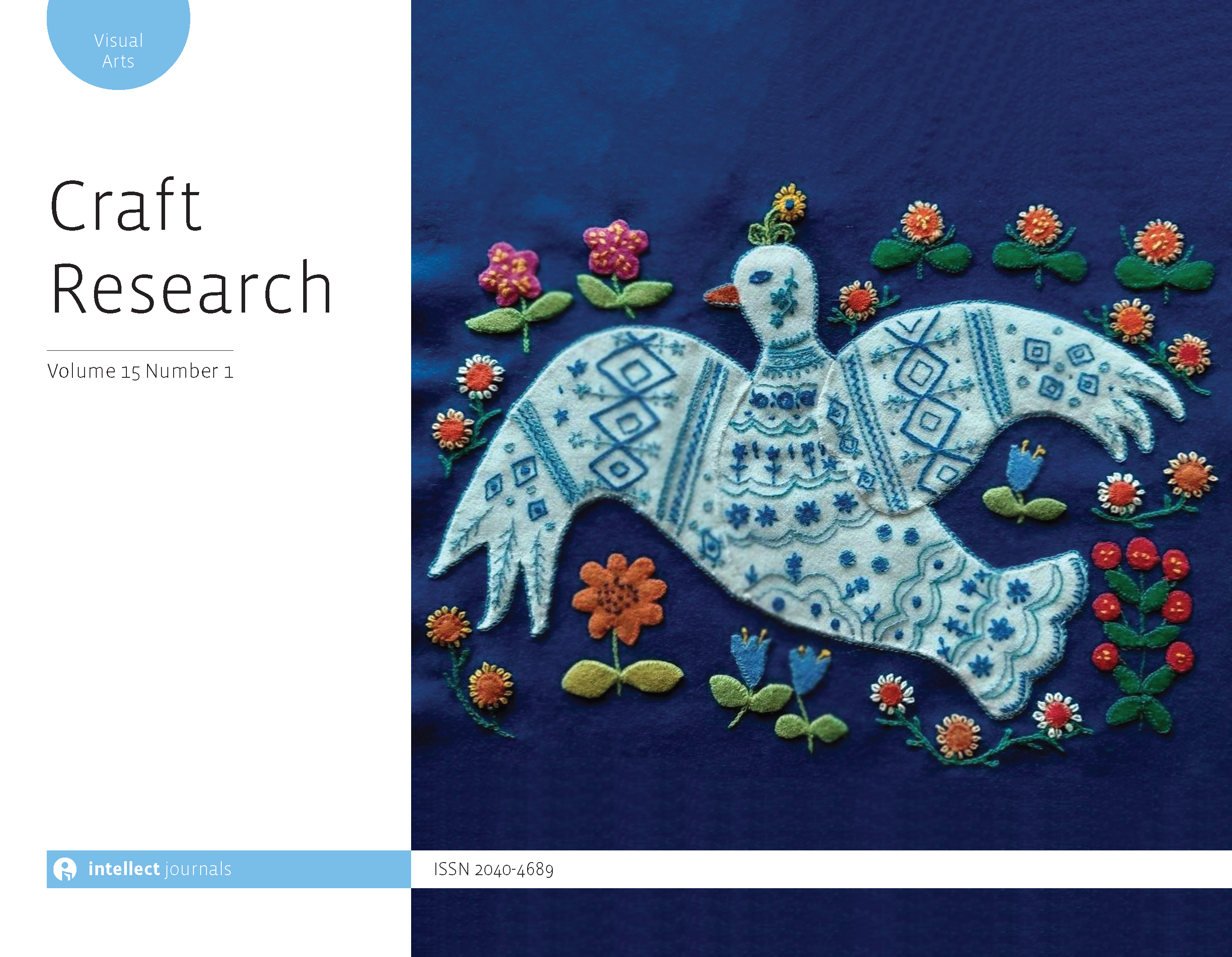-
f Craft is ubiquitous
- Source: Craft Research, Volume 13, Issue Craft Sciences, Sep 2022, p. 211 - 220
-
- 01 Sep 2022
- Previous Article
- Table of Contents
- Next Article
Abstract
This Special Issue presents a selection of contributions that seek to extend the idea of what craft practice and research can be. They stem from the conference presentations in the 1st Biennial International Conference for the Craft Sciences (BICCS), held online during 4–6 May 2021. This conference was initiated by the Craft Laboratory in Mariestad city, which is affiliated with the Department of Conservation, University of Gothenburg, Sweden. What counts as craft, and what does not, has been discussed with the general consensus that craft often evades definitions and instead thrives as an adhesive between other domains. In this editorial we claim that craft practice is ubiquitous, since acts of ‘crafting’ are infiltrated in most aspects of society, from the industrial workplace to the home. In addition to being a professional domain, craftmanship is also an attitude and a way of life. Craft making further facilitates shared reflective platforms which can carry and sustain cultural associations, or even social resistance, over time. We hope to invite readers to extend the notions of what crafts can be, by discussing issues related to such various topics as plant propagation, crystal growing, neuroscientific activity tracking, multimodal presentations of craft research and hybrid forms of digital and handmade craft processes. We also present an overview of educational contexts of crafts and discuss the role of the craft practitioner in heritage studies such as traditional boat building or industrial lace making.



